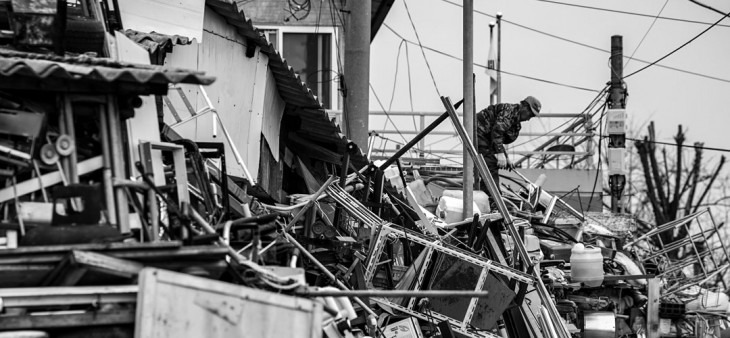
Earthquakes are dangerous and unpredictable.
In 2004, an undersea earthquake in the Indian Ocean triggered a Tsunami that killed 225,000 people. In 2010, Haiti was destroyed by an earthquake which killed 222,000 people.
Unfortunately, unlike other natural disasters, there are no reliable ways to predict when an earthquake will happen. Let alone how strong it will be, or how many aftershocks will follow before the first earthquake happens.
This means we have no alert system. Lives can be put at risk by being in the wrong place at the wrong time.
In a world with so much technology, this seems a little unbelievable.
Can the emerging world of IoT help us predict earthquakes?
The Man Who Predicts Earthquakes
Jim Berkland was known as “The Man Who Predicts Earthquakes”. He correctly predicted two Californian earthquakes, one in 1989, and another in 1994.
How?
By monitoring animals.
In the run-up to earthquakes, Berkland noticed a significant increase in classified ads for lost animals. Animals appear to be able to sense changes that make them act out of character.
However, his methods have never been peer-reviewed, and some scientists actively dispute his claims. Some even go as far as calling him a “crank”. Although he does have some correct predictions, many were wrong.
What has this got to do with IoT?
While Berkland’s theories may not be totally accurate, it’s an interesting line of investigation.
Afterall, we’ve all seen the video of the dog bolting out of the room before an earthquake strikes. Some species of mountain goats will descend from mountains days before an earthquake, and return afterwards.
Up until now, we haven’t had the technology or the funding to be able to analyse data in a big enough way to predict earthquakes. Usually, sample sizes are too small or focused on just one area.
With the Internet of Things becoming a bigger part of our lives, we can begin to monitor everything on a massive scale. From the behaviour of people to the movement of buildings. Billions of people, animals and objects can be monitored for anomalies in areas along fault lines.
If smart fridges can alert someone when a product is going out of date, then a pet’s bowl can monitor when feeding behaviours change. This information can be stored to be monitored by scientists post-earthquake to see if significant changes occur in a big enough number.
While smart speaker devices listening to conversations is a terrible invasion of privacy, we could use it for good.
It’s known that lizards, foxes and wolves will leave the forest to escape into an open area before an earthquake. Monitoring these conversations for an increase in sighting of these animals may help us recognise this behaviour faster. We could also monitor for mentions of lost animals, or animals acting strangely.
When these individual pieces of data form a big enough anomaly in the data, it could trigger alerts for an earthquake.
The Rise Of Smart Cities
But let’s not just focus on animal behaviour here.
With new houses, towns and cities being built every day, developers are desperate for information to plan the best cities.
Sensor networks can be connected to the IoT and use a variety of ways. While meant for City planning, these sensors could be used to monitor tiny tremors which occur every day in real time.
This information can help create a building which can withstand a quake with little damage. This data can be taken further to help developing countries implement these buildings in a cost-effective manor, to help protect lives there.
How Is The IoT Already Helping?
Japan is frequently hit by earthquakes.
They take them very seriously.
Strict building regulations, specialist rescue forces and more are all in place in case of a devastating earthquake.
But recently, they have been using technology to their advantage.
They have sensors placed along faultlines. These sensors send information to central servers. When large tremors are picked up, and alert is sent out.
Tech startup Zizmos are connecting thousands of these sensors to a cloud-based server. These are used to trigger alerts and also allow scientists to access the data to analyse.
Sensors across communities create damage assessment maps for rescue crews within minutes of the earthquake. These maps can be accessed through battery powered devices as well as central computers.
Zizmos can give up to 90 seconds of warning. Which is just enough time to get a small family out of a house and out in the open?
What’s Next For This Technology?
However, much more work needs to be done.
This technology is expensive. So far, only the richest countries can afford to deploy it.
But, the biggest loss of life comes from the poorest countries. Countries that have alerts in place cannot afford the upkeep. Often, these communities do not have access to technology to make buildings safer.
Companies are working to help those who need it. Cisco has it’s Tactical Operations department, which helps countries set up emergency communications when disaster strikes. Startups all over the world are helping to find new solutions.
As the IoT grows, many, rightly, look at the negatives, such as privacy. But there are so many positives to come out of this technology. Maybe one day we can predict earthquakes days in advance, and save millions of lives.
